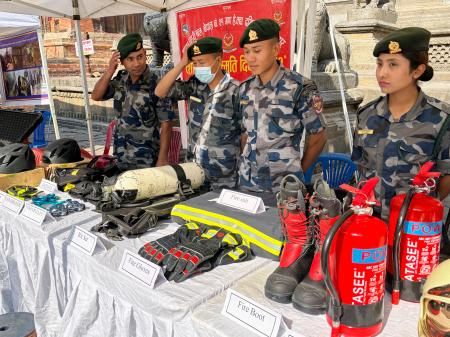Ten Years On: Nepal Earthquake's Lasting Impact
A decade after the devastating 2015 earthquake, Nepal continues its journey of recovery, rebuilding not just homes but also lives and infrastructure. The 7.8 magnitude earthquake, striking on April 25th, 2015, and followed by a powerful aftershock, left an indelible mark on the nation. This article explores the lasting impact of this tragedy, examining the progress made, the challenges that persist, and the resilience of the Nepali people.
The Scars Remain: Physical and Psychological Impacts
The immediate aftermath saw widespread destruction. Iconic landmarks like Kathmandu Durbar Square were reduced to rubble, and countless homes were leveled, leaving hundreds of thousands homeless. The death toll exceeded 9,000, and injuries numbered in the tens of thousands. While much physical reconstruction has occurred, the scars remain visible:
- Damaged Infrastructure: Many rural areas still lack proper roads and access to essential services, hindering economic development and recovery efforts. [Link to a relevant report on infrastructure rebuilding in Nepal]
- Housing Shortages: Though significant progress has been made, a housing shortage persists in many affected regions. Many families continue to live in temporary shelters or substandard housing. [Link to a Nepalese government website on housing initiatives]
- Psychological Trauma: The earthquake’s psychological impact is profound and long-lasting. Many survivors struggle with PTSD, anxiety, and depression. Access to mental health services remains limited in many areas. [Link to an article about mental health support in Nepal]
Beyond the Bricks and Mortar: The Socio-Economic Fallout
The earthquake’s impact extended far beyond physical destruction. It dealt a significant blow to Nepal’s already fragile economy, severely impacting tourism, agriculture, and employment.
- Tourism Decline: The devastation deterred tourists, leading to substantial losses in revenue for the nation’s crucial tourism sector. Recovery has been slow, although tourism is gradually returning. [Link to a news article on Nepal's tourism recovery]
- Agricultural Losses: The earthquake damaged agricultural lands and livestock, impacting food security and livelihoods. Farmers faced immense challenges in recovering their crops and restarting their farms. [Link to data on agricultural impact from the earthquake]
- Increased Poverty: The earthquake exacerbated existing inequalities and pushed many families further into poverty. The recovery process has been uneven, with marginalized communities disproportionately affected. [Link to a report on poverty in Nepal post-earthquake]
A Decade of Resilience: Rebuilding and Reimagining Nepal
Despite the immense challenges, the Nepali people have demonstrated remarkable resilience. Significant progress has been made in various areas:
- International Aid and Support: The international community provided substantial aid and assistance in the immediate aftermath and continues to support Nepal's long-term recovery. [Link to a database of international aid organizations working in Nepal]
- Community-Led Initiatives: Local communities have played a crucial role in rebuilding their homes and communities, often with limited resources. Their participation is vital for sustainable recovery.
- Improved Building Codes: New building codes and construction techniques have been implemented to enhance resilience to future earthquakes. [Link to information on new building codes in Nepal]
Looking Ahead: Challenges and Opportunities
While Nepal has made significant strides in its recovery, challenges remain:
- Funding Gaps: Securing sufficient and sustainable funding for reconstruction and development continues to be a major hurdle.
- Corruption and Transparency: Addressing corruption and ensuring transparency in the allocation and use of funds is essential for effective recovery.
- Climate Change Vulnerability: Nepal's vulnerability to natural disasters, exacerbated by climate change, necessitates investing in disaster preparedness and mitigation strategies.
Nepal's journey of recovery from the 2015 earthquake is a testament to the resilience of its people and the ongoing commitment of the international community. However, continued efforts are vital to ensure a sustainable and equitable future for all Nepalis. The lessons learned from this devastating event will be crucial in building a more resilient and prosperous Nepal in the years to come.
Call to Action: Learn more about how you can support Nepal's ongoing recovery efforts by visiting [link to a reputable charity supporting Nepal].
